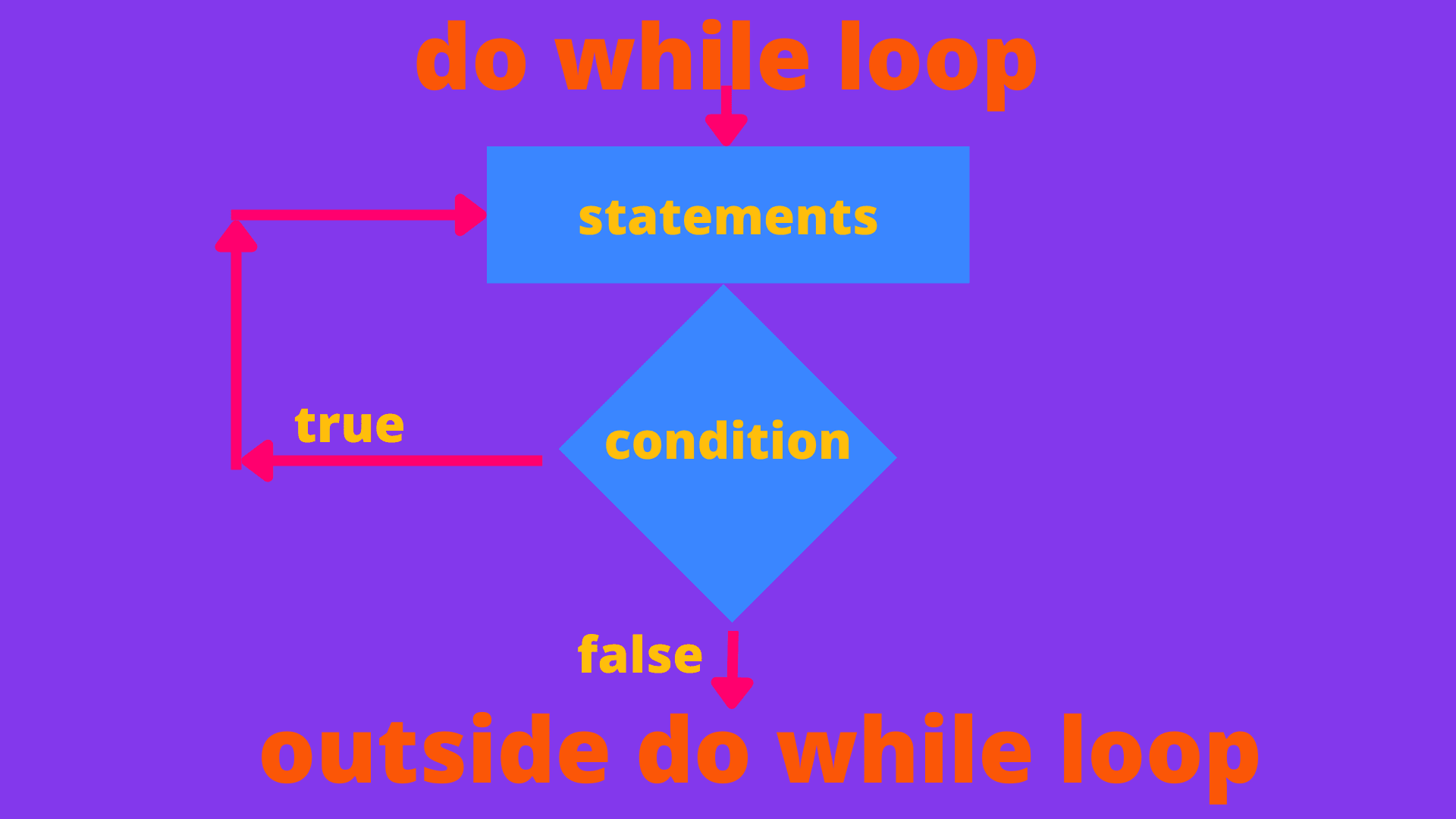Introduction
A loop is a programming language construct that allows programmers to repeat an operation repeatedly.
Looping in programming can solve many problems, but there are also some best practices that programmers should follow when using loops.
This article deal with C++ do while loop: the structure, the syntax, and some examples to consolidate the related concepts.
The importance of looping in C++

Looping in C++ is repeating a set of instructions or code until a particular condition is satisfied. Looping is one of the most significant concepts in programming, and you should learn how to do it as soon as possible.
Loops are used to perform repetitive tasks, such as iterating over an array or list. They are also beneficial for tasks that must be repeated until some condition becomes true, such as waiting for user input.
What is a C++ do while loop programming

- A do while loop is a type of loop that checks the condition after the code block has been executed.
- The do while loop is a loop that checks the condition after the code block has been executed.
- A do-while loop will consistently execute at least once because it will only check for the condition at the end of its execution.
- A do-while loop may execute more than once if its conditional expression is true.
How to write a C++ do while loop?
A do-while loop is a programming control structure that performs a set of statements, then repeats the set of statements until a given condition becomes false.
The condition is tested at the end of each iteration.

1
The syntax for a C++do while loop is:
do { statement; } while (condition);

The difference between while loop and do while loop
A while loop is a programming construct that allows the programmer to repeat a block of code as long as a given condition stays true. The condition is tested before each iteration of the loop, and if it is found to be false, the loop terminates.
A do-while loop does not test its condition before executing its body at least once. This means that for each iteration of a do-while loop’s body, it must be guaranteed that the condition will eventually become true.
The difference between the two loops is that while loop executes the given statement or block of code repeatedly as long as a certain condition is true. In contrast, do-while loops execute the given statement or block of code at least once, then test the condition before repeating.
What are some advantages of using a do while loop?
There are many advantages to using do while loops.
- A do while loop is sound when you want to ensure that specific code runs at least once before persisting with other code.
- A do while loop can be used when you need to verify if a specific condition is true before running any other code.
- A do while loop can be used when you need to check for exceptions and errors before continuing with other code.
- A do while loop can be used when you want to repeat some code.
C++ do while loop examples
Example 1 Counting forward to 7
The program executes the program and lets to count at least once.
The code of the program
#include <iostream>using namespace std;int main () {int counter{};do {cout << counter << endl;counter++;}while (counter < 7);return 0;}
The output of the program

Example 2: Give different values to the letter a
The code of the program
#include <iostream>using namespace std;int main () {// Local variable declaration:int a {15};// do loop executiondo {cout << “a = ” << a << endl;a++;} while( a < 25 );return 0;}
The output of the program

Example 3: Prompt the user to enter a character
Prompt the user to enter a character to receive a piece of information. The program continues running until he tapes the letter X/x. In this case, the program stops running.
The code of the program
#include <iostream>using namespace std;int main () {char choice{};do{cout<<“Choose 1″<<endl;cout<<endl;cout<<“Choose 2″<<endl;cout<<endl;cout<<“Choose 3″<<endl;cout<<endl;cout<<“Choose 4″<<endl;cout<<“**************************”<<endl;cout<<endl;cout<<“Choose from 1 4″<<endl;cout<<“**************************”<<endl;cin>>choice;
if(choice==’1′)cout<<“Enter your first name”<<endl;else if(choice==’2′)cout<<“Enter your last name”<<endl;else if(choice==’3′)cout<<“Enter your email”<<endl;else if(choice==’4′)cout<<“Enter your phone number”<<endl;else if(choice==’X’||choice==’x’)cout<<“NOT THE CORRECT CHOICE”<<endl;elsecout<<“unknown choice”<<endl;}while(choice!=’X’&& choice!=’x’); cout<<endl;return 0;}
The output of the program

Example4: prompt the user to enter the ray of a circle
Prompt the user to enter the ray of a circle to calculate the area of the same circle. Ask the user if he would like to calculate another area of the new given ray circle.
The program terminates if the user enters an input greater than or equal to 60.
The code of the program
#include <iostream>using namespace std;int main (){char area_circle{};do{double ray{};cout<<“Enter the ray to calculate the area of the circle: “;cin>>ray;double area {ray*ray*3.14159};cout<<“The area of the circle “<<area<<endl;cout<<“*******************************”<<endl;cin>>area_circle;}while(area_circle<60);cout<<“Out of the margin!”<<endl;cout<<endl;return 0;}
The output of the program

Conclusion

In conclusion, C++ do while loops are a great way to create a looped program that runs continuously. C++ do while loop executes the same code over and over again at least once.
